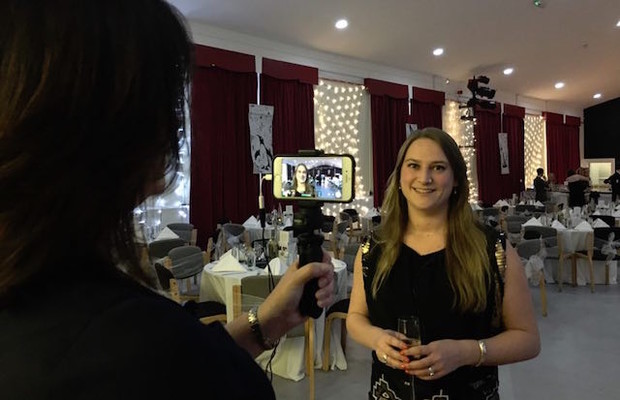Falkland Islands Television (FITV), one of the world's smallest national broadcasters, has been embracing mobile journalism (mojo) in a bid to improve both the workflow of reporters and its reach to audiences further afield.
The television station, which launched in 2011, produces a half-hour long weekly show, 'Falklands In Focus', along with a range of special programmes covering public meetings, sporting events, political matters, and issues of current interest.
Paula Fowmes, station manager, FITV, explained that although they have traditionally used large JVC camcorders, the introduction of mobile journalism into their work has enabled her and the team of three full-time reporters to produce more content in a more efficient way.
"You're always going to have people say that you shouldn't mix cameras, or use a mobile phone by itself to shoot professionally, but you do what you need to do to get the story out there," she said.
"When our new Governor was sworn in, we were told that the ceremony was going to be so busy that cameras couldn't fit in there – so my reporter Chris and I went straight in with our iPhone 7's and just filmed it all on mobile.
"It was great for getting into small spaces and you've not got tripods that people can trip over, plus with two people on mobiles, you've got a two-angle shot straight away."
Using Filmic Pro, a selfie stick, a miniature desk tripod, and a duo lapel mic, the reporters have found they're able to shoot more creatively. This makes production easier in the Falkland Islands, where journalists are regularly filming in unusual places such as the top of a mountain, in a plane or amidst hectic sheep shearing competitions.
They have been experimenting with the type of kit that would work best for them in the long run, as the harsh wind in the Falklands means that audio has to be monitored carefully and kit has to cope with being outside for long periods of time during events.
"We run on an extremely tight budget here – using carpet underlay on the walls in the studios to knock-back the sound, and lights that take up to 30 minutes to heat for the green screen – but we do what we can to make it work for us," Fowmes said.
"A £5 selfie stick has enabled us to get drone-like shots during, for example, motocross tournaments or outdoor parades, while also being great for capturing unique footage from hard-to-reach places, where we might want it on the creative pieces we produce."
But, of course, the benefits of mobile journalism don't stop at the ability to kit a newsroom out for cheap, or even make the lives of journalists easier.
The light, nimble technology and savvy workflow that mojo provides gives publishers the ability to tell more stories to wider audiences, even those outside of a news organisation's target.
The journalists at FITV tend to edit all their footage in Premiere Pro, Fowmes explained, as news packages are joined together to form the weekly show, but they have been experimenting with mobile apps to get more footage on social media.
"Being 8,000 miles away from the UK, we will continue to use mobile journalism to grow our presence on social media and connect with audiences around the world who may be interested in news of the Falklands," she said, explaining that the show will soon be available on a subscription service for overseas audiences.
"Ideally, we'd have someone working on social media full-time as we know it's a vital way to reach people, but using our phones to shoot and edit short pieces for Facebook has been working well so far, and is definitely something that we want to experiment more with."
Free daily newsletter
If you like our news and feature articles, you can sign up to receive our free daily (Mon-Fri) email newsletter (mobile friendly).
Related articles
- Gear, apps and workflows: Rob Layton's complete mobile journalism checklist
- New project InOldNews wants to improve representation in video journalism
- 38 mojo apps from BBC trainer Marc Blank-Settle
- 15 online communities for journalists you should know about
- Ukrainian journalists use smartphones to tell stories of displaced communities












